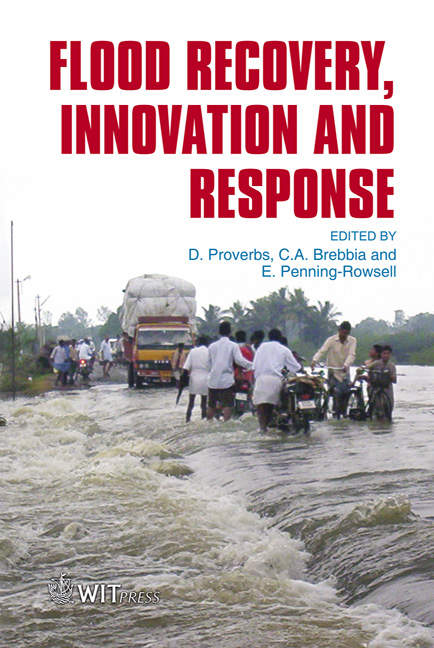Efficiency Of Private Flood Proofing Of New Buildings – Adapted Redevelopment Of A Floodplain In The Netherlands
Price
Free (open access)
Transaction
Volume
118
Pages
13
Page Range
247 - 259
Published
2008
Size
1,453 kb
Paper DOI
10.2495/FRIAR080241
Copyright
WIT Press
Author(s)
B. Gersonius, C. Zevenbergen, N. Puyan & M. M. M. Billah
Abstract
A number of cities in Europe’s deltaic and coastal regions, such as the London metropolis, Hamburg and Dordrecht, share in part similar challenges such as (re)development activities and expansions onto floodplains and they recognize the need for new planning approaches to manage actual and future flood risks in these areas. The tendency is now to look for new ways to distribute responsibilities between different types of stakeholders, so as to take advantage of different initiatives over differing spatial scales, from the catchment level down to the individual building level. In this respect, there is a clear need to include resilience measures taken at the lowest spatial level as part of a top-down and bottom-up approach. This kind of measure comprises flood proofing of buildings and associated infrastructure as well as adapting building activities to the risk. The extent to which such measures will be provided will probably be dictated by micro and macro economic factors. However, as of yet information on their performance is limited, which particularly holds true for the Dutch context. Consequently, the economic efficiency of these technologies is unclear. In this paper a new database containing economic information involving the costs and benefits for implementing these measures is presented. Flood damage databases have been constructed from a synthesis of all data available from both secondary sources, such as the ABI and FEMA database, and from the real experience of floods. The data is built up from knowledge about the effect of flood water on both the fabric of the building and its contents. In order to investigate the efficiency of private flood proofing of buildings, benefit cost analyses for different building types and elevations are conducted for a case study in Dordrecht, the Netherlands. The benefit for each damage reduction strategy is calculated by estimating the difference in expected annual losses compared to the traditional way of building. Keywords: flood proofing, economic efficiency, urban (re)development, urban flood management, resilience.
Keywords
flood proofing, economic efficiency, urban (re)development, urban flood management, resilience.





